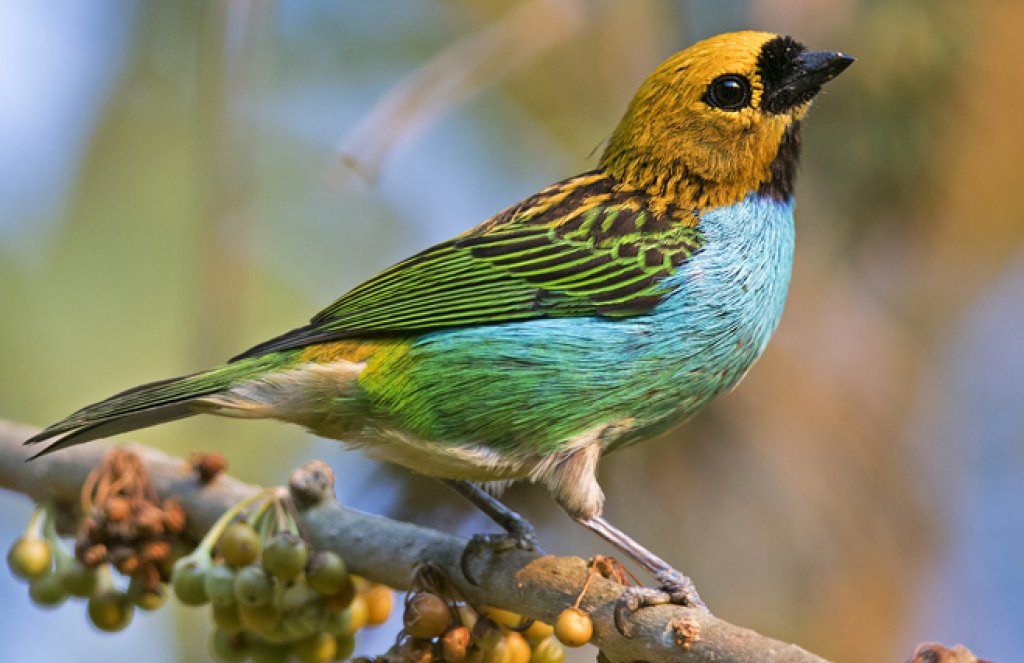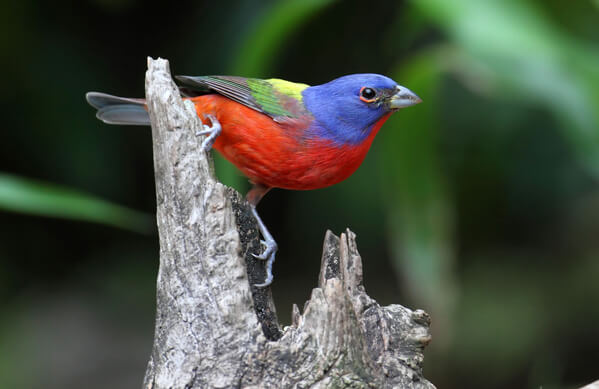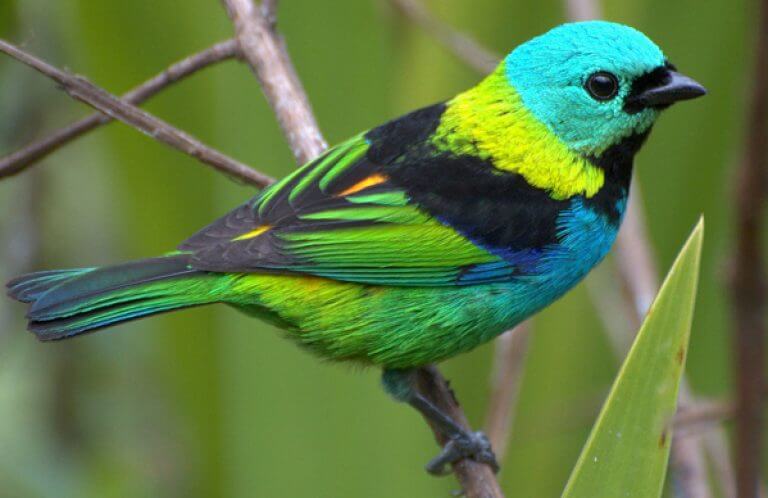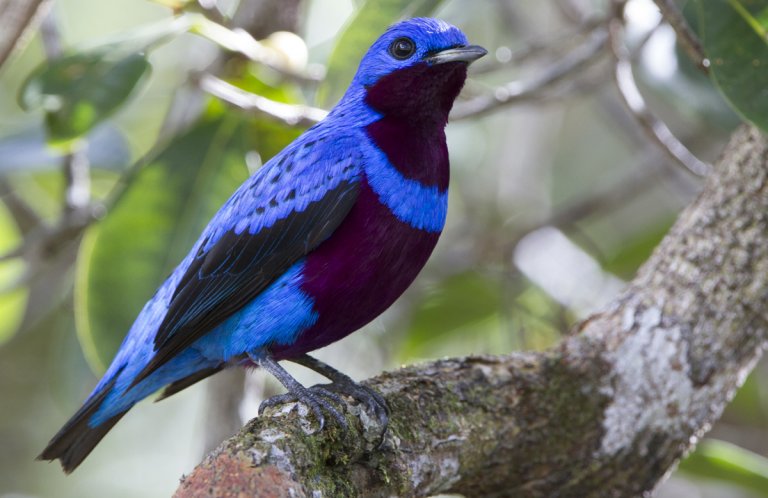About the Gilt-edged Tanager
Like the male Painted Bunting, this eye-catching species' plumage seems an unimaginably gaudy patchwork of colors overlaying a familiar songbird form. Found only in eastern Brazil, the Gilt-edged Tanager belongs to the genus Tangara, which includes many other stunners, such as the Green-headed and Seven-colored Tanagers. In the case of the Gilt-edged, the color scheme includes a yellow-gold head, back, and rump; lime-green wings and tail; and pastel-blue underparts. Plus, these striking accents: black streaks threaded across the bird's gold back; black eyes and eye rings; and a black throat and feathers surrounding the bill.
People often don't realize how much remains to be learned about our planet's wildlife, including many birds. One key aspect of the Gilt-edged Tanager's life remains mostly a mystery.
Secrets of the Nest
Like many of South America's tropical forest birds, the Gilt-edged Tanager does its best to keep its eggs and young hidden from predators. But these birds have done a good job concealing their nests from humans as well. Although often observed foraging and feeding, the Gilt-edged Tanager's breeding details remain sketchy at best, as you'll read below.
Songs and Sounds
This bird's call and song are a series of sharp, high-pitched, and rapid notes and trills.
Listen here:
Breeding and Feeding
Much remains to be learned about the Gilt-edged Tanager's nesting habits. Two nests have been described, one nine and another 36 feet high, one in a tree fork and the other on a palm frond. The cup nest is woven of dry leaves and twigs, and includes other materials such as rootlets and bits of moss and lichen, and, at times, small bamboo strips. Two nestlings were being fed at one nest, and both male and female have been seen feeding the young. Young birds from previous broods have also been seen helping a mated pair feed their nestlings.

Gilt-edged Tanagers move through the forest in pairs or small groups, often as part of mixed-species feeding flocks. These birds usually forage in the middle level of the tree canopy, seeking invertebrates and small fruits, but they will descend to shrub level at forest edges and in some disturbed areas, if drawn by exceptional feeding opportunities. Like others in their genus, Gilt-edged Tanagers often glean the outer tips of branches, sometimes inspecting curled leaves for lurking insects or spiders.
Region and Range

The Gilt-edged Tanager is found only in eastern Brazil, from the southern part of Bahia state south to São Paolo. Although it primarily inhabits humid lowland to montane tropical forest and edges, habitats that are now widely scattered, it also occurs in secondary (re-growing) forest and some disturbed habitats, including gardens.
Conservation
Atlantic Forest All-stars
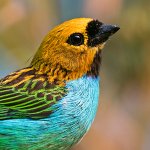
Help support ABC's conservation mission!
Unlike many other Atlantic Forest endemics, the Gilt-edged Tanager is not currently considered at risk. Due to extensive deforestation and fragmentation of its habitat, this tanager is most often found in protected areas, where it can be fairly common, including at ABC-supported reserves such as the Mata do Passarinho Reserve (also known as Stresemann's Bristlefront Reserve). There, ABC and Fundação Biodiversitas, supported by PetroBras, have protected 1,468 acres of land to support rare species such as the Stresemann's Bristlefront and Banded Cotinga. The gorgeous Saffron Toucanet is also found at this reserve.
Get Involved
Many of the rarest bird species in the Western Hemisphere remain relatively unknown. You can learn more about these birds and the threats they face by signing up for ABC's Bird of the Week email series, which frequently highlights these fascinating birds.
American Bird Conservancy and our partners throughout Latin America and the Caribbean have created and expanded more than 100 bird reserves, which protect upward of 1.1 million acres of vital habitat. Together, we've planted more than 6.8 million trees, helping to restore degraded and damaged habitat. You can help us continue to protect endangered birds by making a gift today.





































